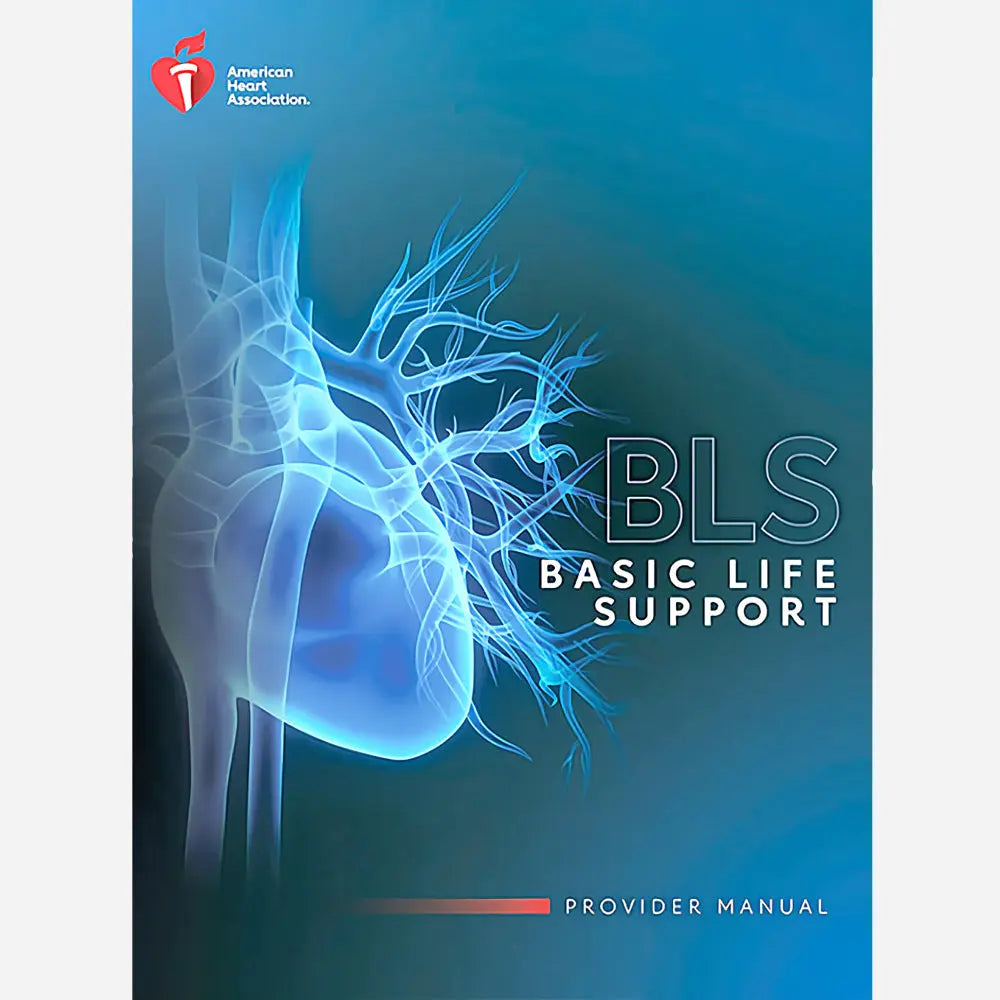Understanding the BLS for Healthcare Provider Manual
This course is designed for healthcare providers and trained first responders who provide care to patients in a wide variety of settings or by those in a healthcare training program.
- Updated to reflect new science in the 2020 American Heart Association Guidelines for CPR & ECC
- Teaches healthcare professionals how to perform high-quality CPR individually or as part of a team.
- Designed for a single user, this text is ideal for use as a reference tool before and after the BLS Course.
- Designed for healthcare providers who must have a card documenting successful completion of a CPR course
- Describe the importance of high-quality CPR and its impact on survival
- Describe all of the steps of the Chain of Survival and apply the BLS concepts of the Chain of Survival
- Recognize the signs of someone needing CPR
- Perform high-quality CPR for adults, children and infants
- Describe the importance of early use of an AED and demonstrate its use
- Provide effective ventilations by using a barrier device
- Describe the importance of teams in multirescuer resuscitation and perform as an effective team member during multirescuer CPR
- Describe the technique for relief of foreign-body airway obstruction (choking) for adults and infants
Introduction to BLS for Healthcare
The BLS for Healthcare Provider Manual is essential for anyone involved in patient care. This comprehensive guide covers basic life support techniques, ensuring that healthcare professionals are prepared for emergencies. By following the protocols outlined in this manual, you will not only learn how to perform CPR effectively but also understand how to use an automated external defibrillator (AED). This training enhances preparedness, making it crucial for everyday operations in healthcare settings.
Key Components of the Manual
Within the BLS for Healthcare Provider Manual, you'll find detailed information on recognizing emergency situations and the most effective responses. The manual covers adult, child, and infant CPR techniques, emphasizing the importance of chest compressions and rescue breaths. Additionally, it provides guidance on managing choking incidents and activating emergency medical services. Knowing these skills is vital because they can mean the difference between life and death during an emergency.
Benefits of BLS Training
Training in BLS through the Provider Manual not only equips healthcare professionals with necessary lifesaving skills, but it also instills confidence. When you know the correct procedures to follow during a cardiac arrest or other emergencies, you can act quickly and decisively. Furthermore, this manual is designed to be easy to understand, making the information accessible for all levels of healthcare workers. Ultimately, being prepared means that you can improve patient safety and outcomes in critical situations.



